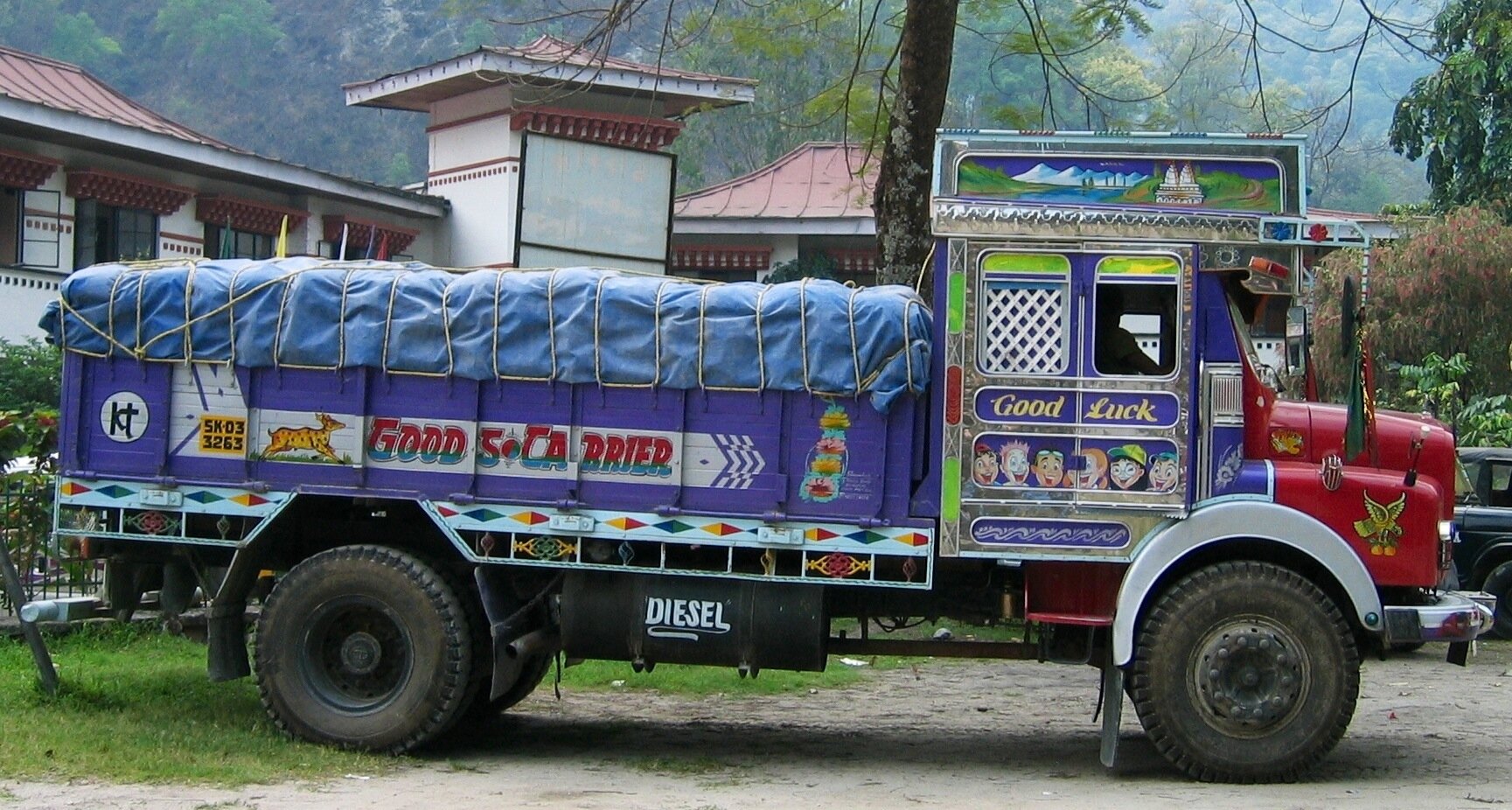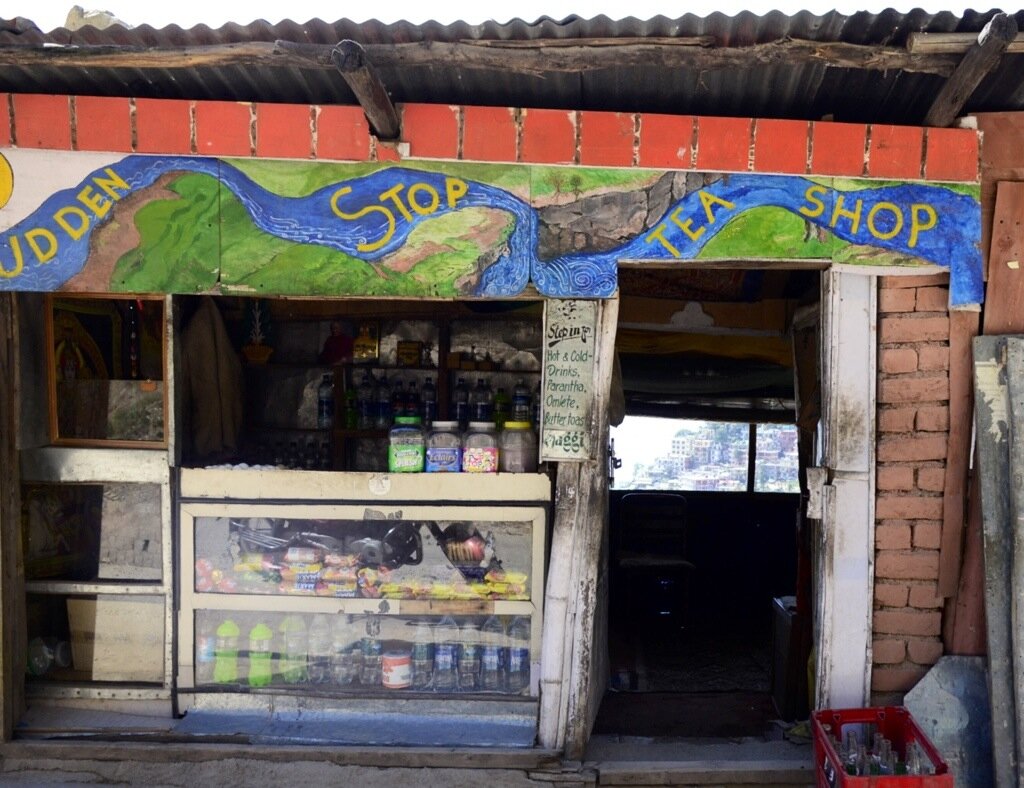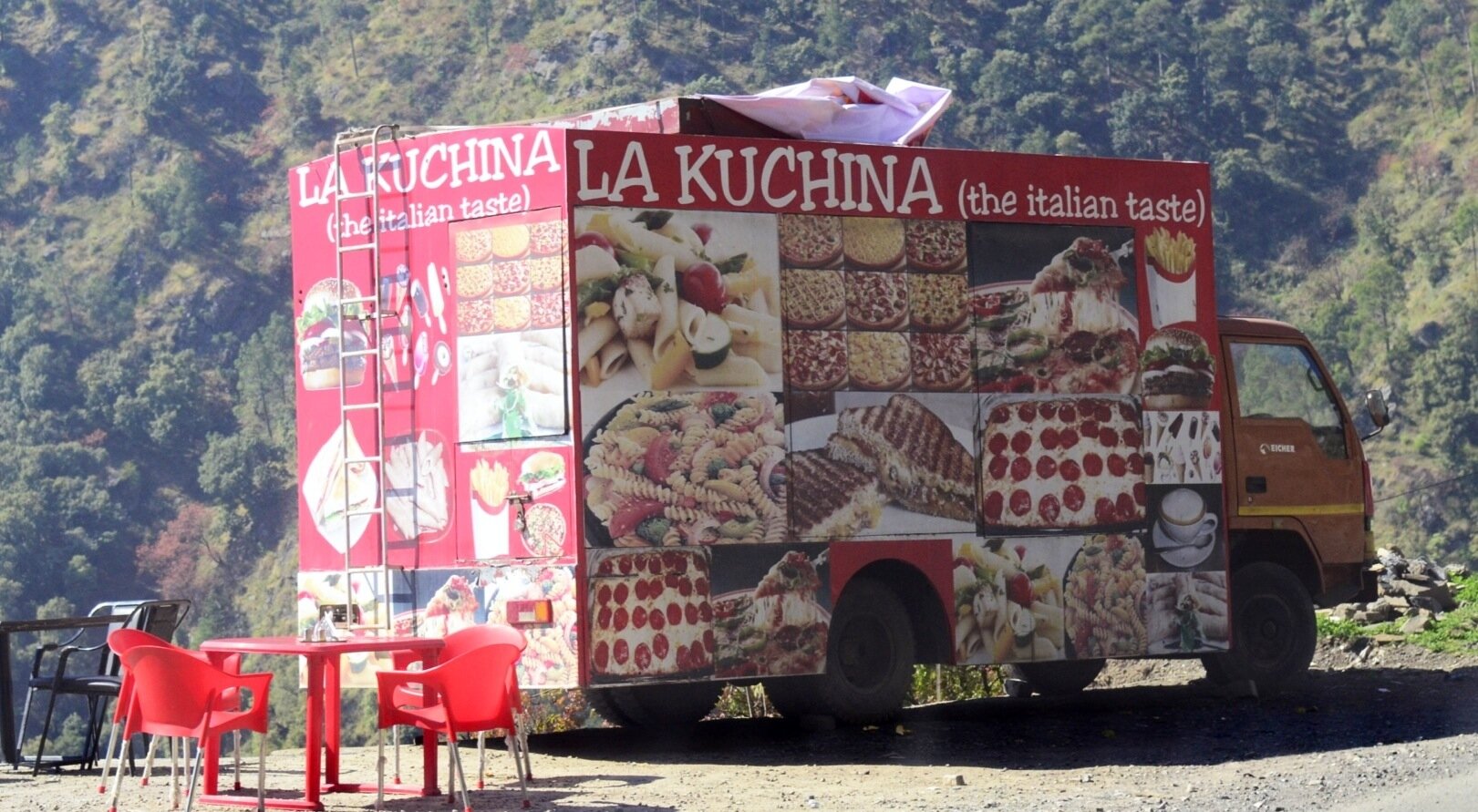The Long and Winding Road
20130403-013940.jpg
20130403-014010.jpg
20130403-014027.jpg
David: We've mentioned the amazing roads around the hill stations, but the road from Mandi to Shimla is worthy of special mention. It is of the same nature as the roads to Dharamsala and Manali, but it is longer, steeper, and has more hairpin turns than the others. And unlike the others, the road to Shimla is a major truck route. Driving it gives a small sense of what it must be like going over the Khyber Pass with all the military supply convoys heading for Afghanistan. An unending stream of overloaded lorries laboring to get up the mountains and then down the other side. On the way up there are many stretches where the lorries struggle to keep pace with a person strolling leisurely along the roadside. And on the way down, their brakes are a constant shriek of metal-on-metal as the drivers try to hold the speed back as they negotiate the succession steeply descending hairpin turns.Mixed in with all the lorries are busses, cars, vans, motorcycles and motor scooters that want to pass the lorries, and each other, at will. There seem to be two rules of the road for passing. If you do not see any approaching traffic (even when you are entering a blind hairpin curve), it's ok to pass because the road ahead is clear. And if you do see oncoming traffic, it's ok to pass because the approaching driver sees you and knows what kind of evasive action is needed to survive the encounter. All this with an almost vertical drop of 1,000 feet if you misjudge where your tire hits the road. As our son Max observed when he first visited India 20 years ago, all the drivers are good because all the bad drivers are dead.The lorries themselves offer a visual treat. Many are the British lorries of World War II design that the Indians continue to produce, and some are slight updates of those old designs. It is as though time has been frozen over the past 60-70 years. Also, the lorries have exuberant personalities created by the over-the-top idiosyncratic artwork that covers them. Photos are the only way to describe their appearance.The only hairpin turns we have seen more severe than those on the road to Shimla are those on the road going up to the monkey temple that sits on the highest peak overlooking the town. The only way to negotiate the turns at each end of the many switchbacks on that road is to make one, and sometimes even two, three-point turns.The road down from Shimla to Chandigarh, where we caught a plane to start our flight home, is more of the same with one difference ("same, same, but different" as they say in Luang Prabang); the change in elevation is even more severe because Chandigarh is all the way back down in the plains. A parting phenomenon before leaving the mountains was the Timber Trail Resort. You have to picture this from words because it is impossible to capture an adequate image by camera. The road runs the length of a narrow valley, half-way up an extremely steep mountainside that must rise no less than 1,500 feet above the river. On top of the opposing mountainside is the Timber Trail Resort, which guests access by cable car that soars, in a single span, high across the river from the road to the resort. They are building a road on the opposing mountainside to provide better access to the resort, and the construction has created a non-stop rockslide from the top of the mountain to the river. We stopped to watch and wonder, how did they build the hotel in that impossible location, and why.Lora: in addition to the hairpin turns and 'hold your breath and pray' driving styles, there are other constants. Namely tea stalls. Indian people like to eat and they make sure there's always food available. Thus, even in the most remote or unexpected place you will find small shacks where you can buy, in addition to tea (chai), candy bars, packaged cookies, fruit and cigarettes. Typically there are groups of men standing or lounging around, shooting the breeze. You never see women there - our guess is that they are working. You can find these stalls in the most ridiculously remote locations - at the top of a mountain, for instance, or down in a dusty valley village. They are adjacent to temples and shrines, and as you enter and exit parks and national monuments. We developed a taste for small packages of Oreos (fewer bad ingredients when they come in small packages, I am certain) and Cadbury fruit and nut bars.
Food carts are as ubiquitous as the black crows that hang out waiting for someone to drop a morsel of anything edible. To score a whole momo (fried vegetable filled savory pastry) is a very big deal.
There are even sources of nourishment that have you staring in wonder:









